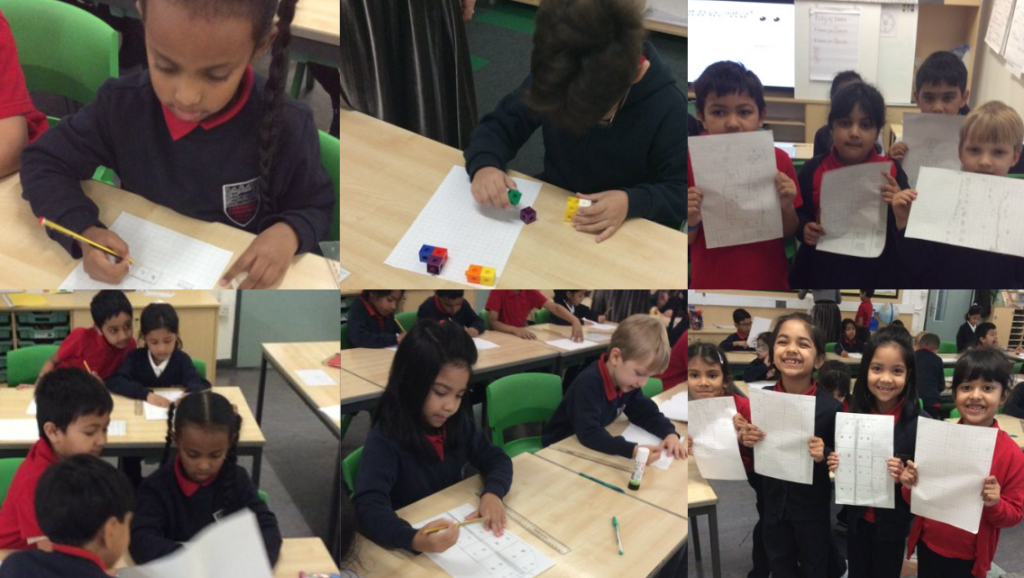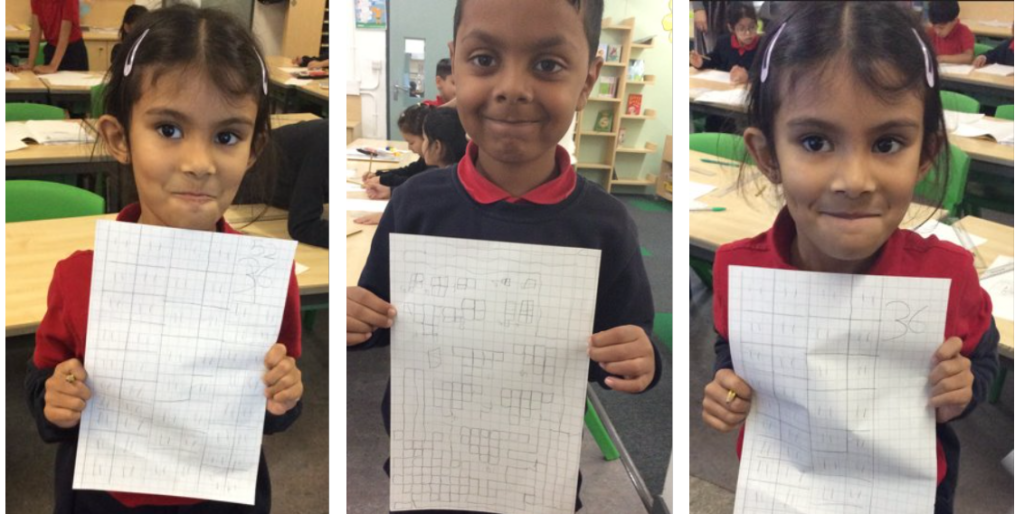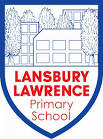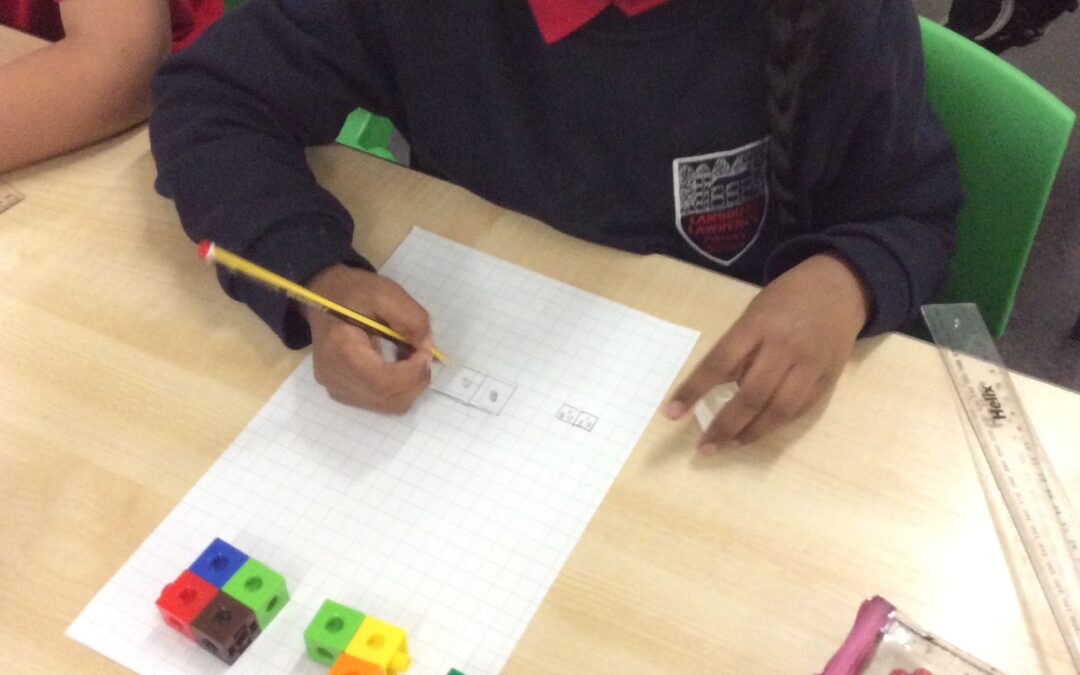This Friday marked the start of our problem-solving journey for the term, and what an incredible beginning it was! The children delved into the world of creative and systematic thinking, taking on a challenge called “A City of Towers.” Here’s a peek into the activity and the fantastic learning moments that emerged.
Building Houses in a City of Towers
Imagine a unique town where houses are built as “towers.” Every family member has their own room, and rooms must be stacked in a special way. Here are the rules:
- Two rooms are always built on the ground floor, side by side.
- Every additional room has to go above these two ground-floor rooms.
So, if a house has two people, the solution is simple: two rooms side by side on the ground floor. But what about a house with three people? Or four? Or seven?

Breaking Down the Problem
We started with small examples and let the children work systematically in teams to build solutions. Here’s a breakdown of what we discovered together:
- House for Two People
For two people, the house has two rooms, both on the ground floor. There’s only one possible arrangement. - House for Three People
With three people, one room is added above the two ground-floor rooms. The children noticed two distinct layouts here:- One room stacked on top of the two ground rooms.
- A “zigzag” pattern where the third room is offset above one of the ground-floor rooms.
- House for Four People
Building for four people added even more possibilities. The children noticed that they could either:- Stack two rooms on top of the ground-floor rooms, making a “tower” two rooms high.
- Create various zigzag patterns, placing rooms above each other in different ways.
Each new room added gave rise to more choices, and the children began to see a pattern of increasing possibilities as the number of people (and rooms) grew.
Teamwork in Action
As they explored different ways of building each house, the children worked systematically, using teamwork to try out all possible arrangements without repeating any. They used blocks to represent rooms, sharing ideas, spotting patterns, and supporting each other’s reasoning. It was fantastic to watch them visualize, discuss, and test their ideas together!
Discovering Patterns and Making Predictions
After exploring houses for families of three and four, the children made predictions:
- How many ways can we build a house for a family of five?
- What about a family of seven?
We noticed that as the family size grew, the possible combinations grew as well. By recognising this, the children began to conjecture and generalize—key skills in problem-solving! Their predictions for a seven-person family were especially exciting because they applied patterns they’d noticed from the smaller examples.


The Big Question: Will This Pattern Always Hold?
As we continued, we challenged the children to think beyond what they could see immediately. Could they create an argument to convince others that their pattern would always work? This encouraged them to think deeply, developing reasoning skills and the ability to explain their ideas clearly.
Ayub ” 2 people house would be like that and three people house would look like that and I knew that I just had to carry on and use my imagination to help me build the tower.”
Md Hamza “I knew three was a L shape and 4 is like a square, 5 looks like a shape of a six and 7 looks like a shape of a rectangle. So basically the more you stack up it looks like a tower. A little bit like Canary Wharf towers. I think I could build Canary Wharf like towers!”
Aleeza “You basically have to start at the bottom and work your way up to the top. But you need to be careful and make sure you follow the rule.”
This activity was a brilliant mix of fun and focused problem-solving! The children demonstrated creativity, resilience, and teamwork. We’re looking forward to more challenges like this, where our Year 2 learners can keep building these skills. Why not ask your child to show you a “tower house” for three or four people? They’d love to show you what they learned today.
Thank you for supporting our young problem-solvers on this journey! Stay tuned for more updates as we explore new challenges this term!
Home Learning Ideas for “A City of Towers”
Here are some fun ways to bring the learning from “A City of Towers” into your home, letting children explore, create, and build on what they learned in class.
Build Your Own Towers with Blocks or LEGO
Try “family” sizes bigger than 7! See how the number of possibilities grows as they add more rooms.
Use blocks, LEGO, or anything stackable (like small boxes or even cushions!).
Challenge
Have your child build tower houses for different family sizes, starting with 3 people and moving up to 7. Can they find all the different ways to arrange the rooms?
Having fun is the most important part!
When children enjoy learning, they’re naturally more curious, engaged, and willing to dive into challenges. The activities from “A City of Towers” are all about sparking that joy in problem-solving, exploring new ideas, and creating their own little worlds with blocks, drawings, or even stories.
So, let’s keep it light, playful, and full of fun discoveries! Enjoy these moments with your young builder—you’ll both be amazed by what they can come up with!

